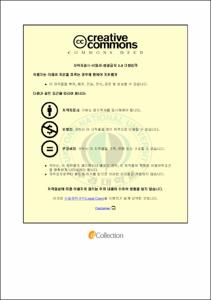DEA를 이용한 OECD 국가 수산업 효율성 분석
- Alternative Title
- A study on the efficiency of fisheries in OECD countries based on DEA
- Abstract
- Fisheries is a source of life for fishermen snd fishery product has increased its value as a food due to natural disasters and population growth. With the increase in consumption of fishery products, resources of fishery product are overfished by injection of supernumerary fishing effort quantity, and are gradually depleted due to changes such as advances in technology, oceanic environment. These problem are global issues. As resources aren't preserved by reduction of catch of fish and fishing vessel from one country, international convention for fisheries is contracted.
Through this study, it can know the degree of excess of commitment element by examining variables that can affect output of marine products in the world. In order words, it can know degree of adjustment of input variables to maintain the production efficiency.
In this study, I used the following elements:the number of fishing vesseles, gross registered tonnage, the number of employees in fisheries, government financial transfers to fishing as the input variables, the total production as the output variable. Due to It is difficult to know the exact amount of shoal of fishes, the amount of shoal of fishes are assumed to be fixed, the amount of fishing effort that is artificially controllable as subject of analysis is used in this study. And this study is targeted a total of 17 countries:Norway, New Zealand, Iceland, Japan, Chile, Turkey, South Korea, Australia, Greece, Denmark, Belgium, Sweden, Spain, Estonia, the UK, Italy, Finland. 'Review of Fisheries: Country Statistics 2012' provided by OECD(Organization for Economic Cooperation and Development) is used for the data of the study. The theory used for study is DEA model that is nonparametric efficiency measurement and input-oriented CCR model suggested by Charnes, Cooper, and Rhodes(1978), input-oriented BCC model suggested by Banker, Charnes, and Cooper(1984) and Rank-sum test suggested by Wilcoxon-Mann-Whitney are used for this study.
In summary for efficiency of fisheries, overall technical efficiency (CRS) is 55%, pure technical efficiency (VRS) is 35%, and 30% of efficiency of scale inefficiency. The current the total output can be maintained even variables used study reduce 55%, 35% and 30% on average. Countries or return to scale are Iceland, Chile, Denmark, Finland. These countries are operated efficient in fisheries because of efficiency value of 1 in input-oriented CCR model. In Pure technical efficiency of BCC model, Norway, Iceland, Japan, Chile, Denmark, Belgium, Estonia, Finland is a country that is relatively efficient. From among these countries, Norway, Japan, Belgium, Estonia are inefficient about scale efficiency because technical efficiency is 1, but pure technical efficiency is not 1.
In summary for Rank-sum test, it exists efficiency gap between top 6 countries of many amount of exports:Norway, Chile, Denmark, Spain, Iceland, United Kingdom and bottom 11 countries of many amount of exports:Sweden, Japan, South Korea, Belgium, New Zealand, Australia, Italy, Greece, Turkey, Estonia, Finland due to scale efficiency. In addition, It can be seen that there is no efficiency gap between non-EU countries:Norway, New Zealand, Iceland, Japan, Chile, Turkey, South Korea, Australia and european Union:Greece, Denmark, Belgium, Sweden, Spain, Estonia, the UK, Italy, Finland.
Due to lack of data, it can't be compared effectiveness of fisheries among all OECD countries in this study. This study was analyzed using the data of 2008 due to lack of DMU required for analysis. Thus, It can be expected difference the year 2013. It was analyzed using statistical data without considering about individual characteristics of countries and only considered fishing effort because it is difficult to know the exact amount of shoal of fishes.
- Issued Date
- 2014
- Awarded Date
- 2014. 2
- Type
- Dissertation
- Publisher
- 부경대학교
- Alternative Author(s)
- Park Yeon ji
- Affiliation
- 대학원
- Department
- 대학원 자원경제학과
- Advisor
- 윤형모
- Table Of Contents
- 제 I 장 서론 1
1절 연구의 배경 및 목적 1
2절 연구의 범위 및 방법 2
3절 연구의 구성 3
4절 선행 연구 3
제 II 장 이론적검토 6
1절 효율성의 개념 및 측정 방법 6
2절 DEA의 이론적 검토 8
1) 투입지향 CCR 모형(Input Oriented CCR) 8
2) 투입지향 BCC 모형(Input Oriented CCR) 11
3) DEA 모형의 장점, 단점 13
제 III 장 연구의 설계 및 실증 분석 15
1절 분석 자료 개요 및 기초 통계량 15
1) 변수의 선정 15
2) 표본의 선정 17
3) 기초 통계량 18
2절 DEA 분석 결과 22
1) 효율성 분석 22
2) 효율성 순위 27
3) 규모 효율성에 대한 특성 28
4) 준거집단 및 람다()값 32
5) 투영점와 투입물 초과분 36
6) 효율성 개선 40
7) 순위합검정 48
제 IV 장 결론 54
1절 연구의 요약 및 시사점 54
2절 연구의 한계점 및 연구 방향 56
참고문헌 58
- Degree
- Master
- Files in This Item:
-
-
Download
 DEA를 이용한 OECD 국가 수산업 효율성 분석.pdf
기타 데이터 / 845.67 kB / Adobe PDF
DEA를 이용한 OECD 국가 수산업 효율성 분석.pdf
기타 데이터 / 845.67 kB / Adobe PDF
-
Items in Repository are protected by copyright, with all rights reserved, unless otherwise indicated.